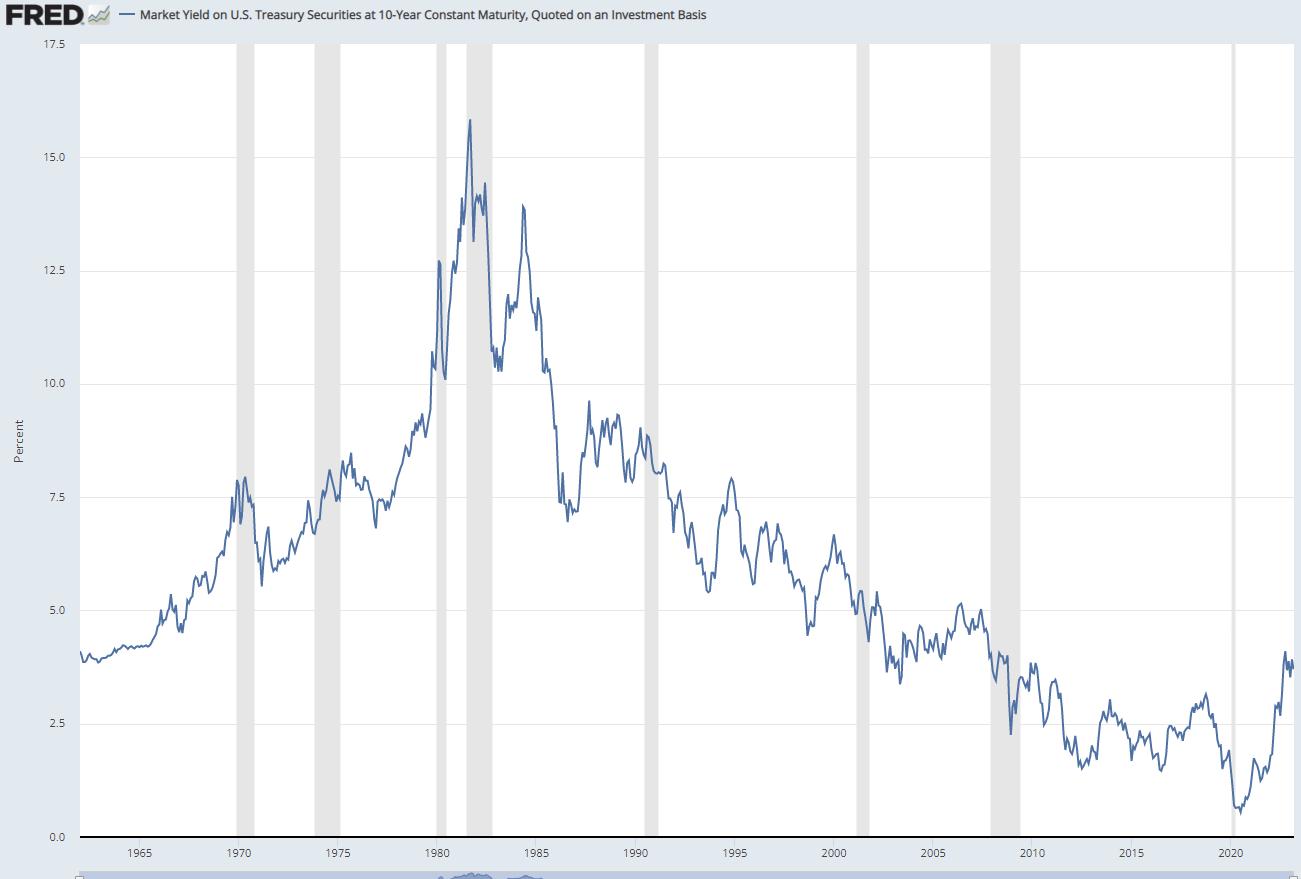
2 minute read
INVESTMENT LETTER
Focus on Fixed Income

• During the early 1960s, rates were relatively stable, ranging from around 4 – 6%.
On March 16, 2022, the US Federal Reserve began their current cycle of interest rate hikes. The hikes have been rapid and relentless. With 12 months of perspective, this investment letter focuses on fixed income: the long-term history of interest rates, the changes wrought by the COVID-19 pandemic, and the challenges and opportunities in the current environment.
Using the 10-year US Treasury bond as our benchmark, we can examine over 60 years of interest rates in this chart from the Federal Reserve Bank of St. Louis:
Clearly, in the years since 1962, US interest rates have fluctuated significantly.
• In the late 1960s and early 1970s, rates began to rise due to inflation and an increase in government spending. By 1981, rates had reached a historic high of nearly 16%.
• Throughout the 1980s and 1990s, rates gradually declined, as inflation was brought under control and the economy improved. In the early 2000s, rates remained low, but began to rise again in the mid-2000s, peaking just over 5% before the onset of the 2008 financial crisis.
• Following the crisis, rates fell dramatically as the Federal Reserve implemented policies to stimulate the economy. A remarkably long period of lower-than-historical average rates ensued, giving us what could be called “the lost years for yield”.
THE LOST YEARS FOR YIELD: 2008 – 2021
This period of low yields, with the short-term fed funds rate at near-zero levels, had a significant impact on investors. The aim of the Fed’s policy was to promote economic growth by encouraging borrowing and investment. Indeed, low interest rates made it cheaper to borrow money and invest in stocks, bonds, and other assets.
This led to a surge in demand for securities, pushing up prices and driving strong returns. However, low interest rates also had some negative effects on investors. With the low yields on traditional safe-haven investments such as certificates of deposits (CDs) and government bonds, investors had to take on more risk to earn higher returns. Additionally, low interest rates made it more difficult for income-oriented investors to generate sufficient income from their investments.
PANDEMIC STIMULUS, RISING PRICES, AND THE “TRANSITORY” NARRATIVE
The onset of the COVID-19 pandemic brought interest rates even lower as the Fed aimed to mitigate the economic and financial impacts of the pandemic and support a robust recovery. Their actions were necessary but -- along with supply chain disruptions, strong demand from consumers spending stimulus checks and savings accumulated during the lockdowns -- the general level of prices began to rise. The Consumer Price Index (CPI) began to show significant increases in inflation starting in March 2021.
The Fed acknowledged these inflationary pressures but deemed them to be “transitory”. They believed that as the global economy recovered and supply chains stabilized, price pressures would ease, and lower inflation rates would return. However, by February 2022, the year-over-year change in the CPI for all items was 5.0% and the Fed began their rate increases at the March 16, 2022, FOMC meeting. Their narrative has evolved from “transitory” to “higher for longer”.
TODAY’S ENVIRONMENT AND OPPORTUNITIES IN 2023
With the current level of interest rates, there is once again “income” to be had from fixed income investments. Like most asset managers, we purchase interest-bearing securities with the intention of holding them to maturity so that clients can benefit from the cash flow that they provide. The sharp upward trajectory of the 10-year US Treasury shown in the graph above and an inverted yield curve has created opportunities to increase the yield component of returns in our client accounts.
There have been very attractive rates in short term (1 – 3 years) CDs and Treasuries. We are, however, cognizant of the reinvestment risk inherent in these shorter maturities. (Reinvestment risk refers to the risk that an investor may not be able to reinvest principal at an equivalent rate of return as the original investment.) Thus, we are also focusing on high-quality debt instruments that can provide a 5% to 6% yield to maturity for upwards of ten years. This should allow fixed income to resume its traditional role of providing stability and dependable income in clients properly allocated buy-and-hold portfolios.




